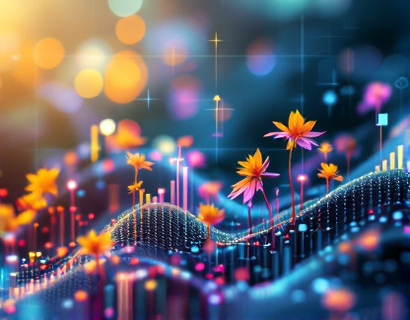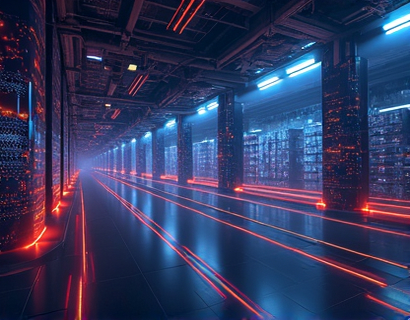Revolutionizing Aquaculture Businesses: The Power of Advanced Software Solutions
In the rapidly evolving world of aquaculture, business owners and managers face numerous challenges that can impact the success and sustainability of their operations. From managing complex supply chains to optimizing resource usage and ensuring compliance with regulatory standards, the demands are multifaceted. Advanced software solutions have emerged as a game-changer, offering a comprehensive suite of tools designed to streamline operations, boost productivity, and enhance overall efficiency. This article delves into the transformative impact of these software solutions, providing insights into how they can revolutionize the aquaculture industry.
The Importance of Streamlining Operations in Aquaculture
Streamlining operations is crucial for any business, and aquaculture is no exception. The aquaculture sector involves intricate processes, from breeding and rearing to harvesting and distribution. Each stage requires meticulous planning, precise execution, and continuous monitoring. Traditional methods often lead to inefficiencies, higher costs, and potential bottlenecks. Advanced software solutions address these issues by automating routine tasks, providing real-time data insights, and facilitating better decision-making.
One of the primary benefits of streamlined operations is the reduction of manual errors. Automated systems ensure that tasks are completed accurately and consistently, minimizing the risk of human error. For instance, automated feeding systems can precisely calculate and dispense the correct amount of feed based on the specific needs of the fish, reducing waste and optimizing growth rates. This level of precision not only improves productivity but also contributes to environmental sustainability by minimizing excess feed that can pollute water bodies.
Enhancing Productivity Through Advanced Tools
Productivity is a key factor in the success of any aquaculture business. Advanced software solutions offer a range of tools that can significantly enhance productivity. One such tool is integrated management systems that provide a centralized platform for monitoring and controlling various aspects of the operation. These systems can track water quality parameters, monitor fish health, and manage inventory levels, all from a single dashboard.
Data analytics plays a pivotal role in these systems. By collecting and analyzing data from sensors and other monitoring devices, software can identify trends, predict potential issues, and suggest optimal solutions. For example, water quality data can be analyzed to detect early signs of disease outbreaks or environmental stressors, allowing managers to take proactive measures to prevent losses. This data-driven approach ensures that decisions are based on accurate and timely information, leading to more effective and efficient operations.
Optimizing Resource Management
Resource management is another critical area where advanced software solutions can make a significant difference. Aquaculture operations require a careful balance of resources, including water, feed, energy, and labor. Inefficient use of these resources can lead to increased costs and environmental impact. Software solutions help optimize resource usage through several mechanisms.
Firstly, these systems can monitor and control resource consumption in real-time. For instance, smart sensors can track water usage and alert managers to leaks or excessive consumption. Similarly, feed management systems can adjust feed quantities based on real-time data on fish size, density, and growth rates, ensuring that only the necessary amount is used. This not only reduces waste but also lowers operational costs.
Secondly, resource optimization software can help in planning and scheduling tasks more efficiently. By analyzing historical data and current conditions, the software can predict the best times for activities such as feeding, cleaning, and harvesting. This optimization ensures that resources are used when they are most needed, reducing downtime and improving overall efficiency.
Compliance and Sustainability
Compliance with environmental and regulatory standards is a mandatory aspect of running a sustainable aquaculture business. Advanced software solutions can greatly assist in meeting these requirements. These systems can track and manage various compliance aspects, such as reporting on water quality, monitoring chemical usage, and ensuring adherence to stocking densities.
For example, software can generate detailed reports that meet the standards set by regulatory bodies, making the compliance process more straightforward and less time-consuming. Additionally, by maintaining accurate records and monitoring key parameters, the software helps ensure that operations remain within legal limits, reducing the risk of fines and reputational damage.
Sustainability is not just a regulatory requirement but also a core value for many aquaculture businesses. Software solutions can support sustainability goals by providing tools to monitor and reduce the environmental footprint of operations. For instance, energy management systems can optimize the use of renewable energy sources, such as solar or wind power, to reduce reliance on fossil fuels. This not only lowers costs but also enhances the business's eco-friendly image.
Improving Decision-Making with Advanced Analytics
One of the most powerful aspects of advanced software solutions in aquaculture is their ability to provide deep insights through advanced analytics. These insights can transform the way business owners and managers make decisions, leading to more informed and strategic choices.
Predictive analytics is a key feature of these systems. By analyzing historical data and current trends, the software can forecast future scenarios, such as market demand, disease outbreaks, and equipment failures. This foresight allows managers to prepare proactively, whether it's adjusting production schedules to meet demand or scheduling maintenance to prevent costly downtime. Predictive analytics can also help in optimizing breeding programs by identifying the best times for spawning based on environmental conditions and fish health.
Another valuable tool is performance benchmarking. Software can compare key performance indicators (KPIs) against industry standards or internal targets, providing a clear picture of how the operation is performing. This benchmarking helps identify areas for improvement and sets realistic goals for enhancement. For example, if a farm's feed conversion ratio is higher than the industry average, the software can suggest specific strategies to further optimize feed usage.
Integration and Scalability
Modern software solutions are designed to be highly integrable and scalable, ensuring that they can grow with the business. Integration with existing systems, such as ERP (Enterprise Resource Planning) and CRM (Customer Relationship Management) systems, is crucial for a seamless workflow. This integration allows for the seamless flow of data between different departments and stakeholders, reducing silos and improving overall coordination.
Scalability is equally important, as aquaculture businesses can vary greatly in size and complexity. Advanced software solutions can scale from small-scale operations to large industrial facilities, adapting to the specific needs of each business. This flexibility ensures that the software remains a valuable asset as the business grows and evolves.
User-Friendly Interfaces and Training
Despite the complexity of the features and functionalities, advanced software solutions are designed to be user-friendly. Intuitive interfaces and comprehensive training programs ensure that staff can quickly adapt to the new systems without extensive training. This ease of use is crucial for widespread adoption and effective utilization of the software's capabilities.
Many software providers offer onboarding sessions, tutorials, and ongoing support to help users maximize the benefits of the system. This support can include remote assistance, online resources, and community forums where users can share best practices and solutions to common challenges.
Case Studies and Real-World Applications
To better understand the impact of advanced software solutions in aquaculture, let's look at a few real-world examples. A mid-sized fish farm in Asia implemented an integrated management system that included automated feeding, water quality monitoring, and inventory management. Within six months, the farm reported a 15% increase in productivity and a 10% reduction in feed costs. The real-time data insights allowed the farm to make timely adjustments, leading to healthier fish and higher yields.
Another example is a large-scale shrimp farm in South America that adopted a comprehensive analytics platform. The platform provided predictive insights into disease outbreaks and market trends, enabling the farm to implement preventive measures and adjust pricing strategies. As a result, the farm saw a 20% reduction in disease-related losses and a 15% increase in revenue.
Conclusion
The adoption of advanced software solutions in aquaculture is not just a trend but a necessity for businesses looking to stay competitive and sustainable in the long term. These solutions offer a holistic approach to managing operations, from streamlining daily tasks to providing deep insights through advanced analytics. By embracing these technologies, aquaculture businesses can achieve higher productivity, optimize resource usage, ensure compliance, and make more informed decisions.
As the industry continues to grow and face new challenges, the role of software in enhancing efficiency and sustainability will only become more critical. Business owners and managers who invest in these advanced solutions will be better positioned to thrive in a dynamic and competitive market.










































